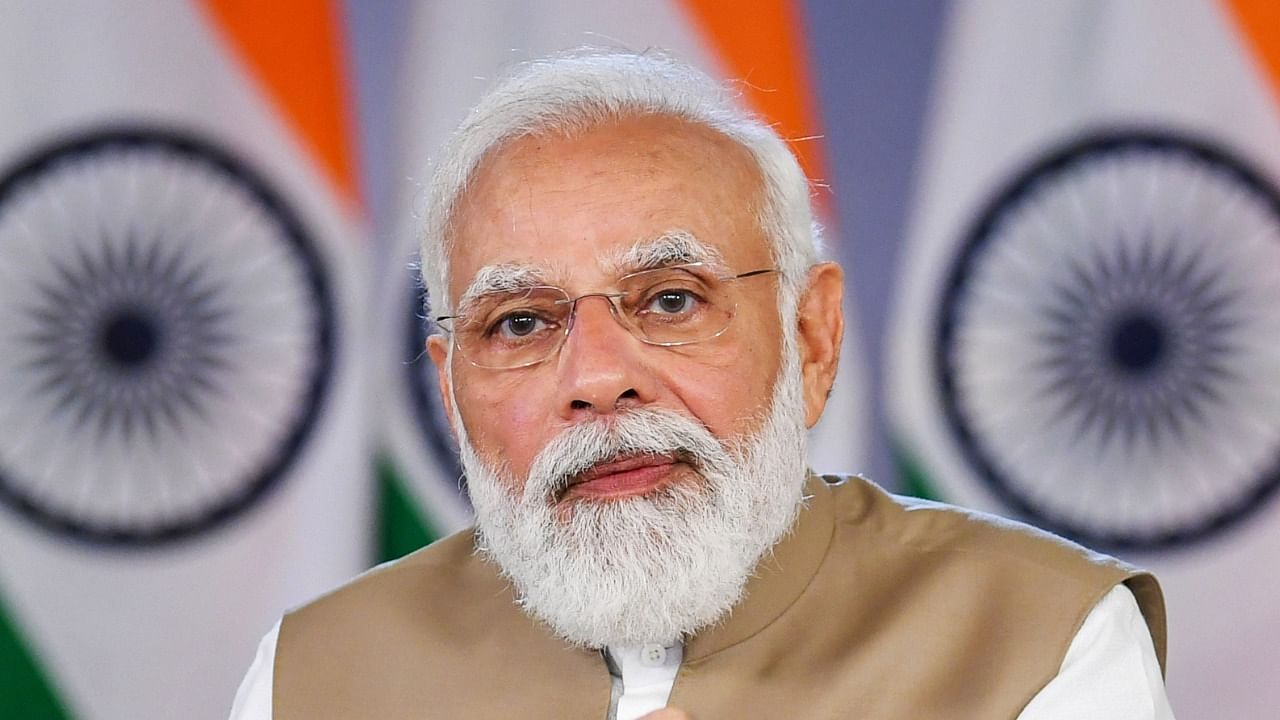
After declaring Narendra Modi its prime ministerial candidate in September 2013, the Bharatiya Janata Party (BJP) has brandished its 'Modi electoral dividend' - the charisma of its foremost leader - for its wins in the two Lok Sabha and several of the 51 Assembly polls to have taken place since.
The BJP has buttressed Modi's charisma with its government at the Centre announcing welfare schemes and development projects, particularly with an eye on the poll-bound states, in successive Union Budgets since 2015. The opposition has accused the Modi government of using the Union Budget as a poll campaign tool and violating the Election Commission's model code of conduct.
It is, therefore, intriguing that the Modi government and the BJP have not used their two trump cards for the current round of Assembly polls to Uttar Pradesh, Uttarakhand, Punjab, Manipur and Goa.
The Union Budget of 2022-23, which Finance Minister Nirmala Sitharaman tabled in Parliament on February 1, surprised analysts for its complete absence of obeisance to the poll-bound states.
Contrast this to 2017 when the Modi government advanced the presentation of the Budget from February 28 to February 1, so that it tables it in Parliament days before the first phase of voting in Uttar Pradesh Assembly polls. In the 2019 Budget, a couple of months after its losses in Madhya Pradesh, Rajasthan and Chhattisgarh Assembly polls on account of agrarian distress, and with two months to go for the Lok Sabha polls, the Modi government announced PM Kisan Nidhi for farmers.
Similarly, the BJP has yet to unleash the PM's blitz of poll meetings for the forthcoming Assembly polls, which it usually does in the run-up to elections to crucial states.
Modi had addressed nearly two dozen public meetings in West Bengal, which the BJP ignominiously lost last May. It had laid store in Modi's charisma to help it conquer its final frontier. But with the first phase of polling in Uttar Pradesh, undoubtedly the most electorally significant state, 48-hours away, Modi's public meetings have been few and far between.
On February 7, the PM did not land in Bijnor for a scheduled poll meeting, eventually addressing it remotely. His physical absence was attributed to inclement weather. Rashtriya Lok Dal leader Jayant Chaudhary tweeted, "The sun is shining in Bijnor, but the weather is bad for the BJP!" Last week, the PM had cancelled addressing a public meeting in Uttarakhand. He is yet to address any meetings in Goa and Manipur. He has not headed to Punjab after fracas over his security.
Should one interpret the above instances as the BJP and Modi government's diffidence about the forthcoming polls, as some opposition leaders have? Is the BJP, after the Bengal joust, wary of further denting Modi's charisma and wants to save it for future electoral battles, particularly in Gujarat at the end of this year?
There could be another reason to explain how concern for poll-bound states did not overwhelm the Budget making exercise, or the PM not conducting his usual blitz of election rallies for the first two phases of UP, where 113 of the total 403 seats are at stake.
The Sangh Parivar, or so its strategists claim, is hoping to ensure the BJP's win in these poll-bound states, especially UP, without Modi's frenetic campaigning or periodic announcement of schemes in the Budget or despite people complaining of an increase in prices of essential commodities and job losses.
The BJP believes it has created two distinct classes of its support base in the last seven years, both of which will vote for the party despite adverse livelihood conditions or caste affiliations.
One of which is a "class of beneficiaries", cutting across caste lines, of its social welfare schemes. For example, the governments at the Centre and Lucknow claim to have disbursed over Rs 3.5 lakh as DBTs, or direct benefit transfers, in UP.
Since 2015, the PM has single-mindedly tried to displace the Congress, with the BJP and himself, in the popular imagination as the party of the poor and Indira Gandhi their messiah. In his speech in the Lok Sabha on February 7, Modi said the poor have seen through the Congress for having misled them for the last 50-years and reduced it to electoral irrelevance in several states.
The other is an ever-enlarging section of the electorate, again cutting through caste lines, convinced of the BJP's propaganda that it is the only party that can rein in Muslims and teach Pakistan a lesson or two. The PM spent significant time in the Lok Sabha on February 7 to portray the Congress as a "divide and rule" party.
It is also why Union minister Kapil Patil told people at a public meeting in Maharashtra's Thane district last week that Modi has not become the prime minister to bring down the prices of onions and potatoes. Patil said Modi is PM as he is the only one who can get Pakistan-Occupied Kashmir (PoK) back to India by 2024 and take bold decisions, like repealing Article 370.
However, the BJP's concern about the price rise was evident in the PM's Lok Sabha speech. He said the inflation rate during the last years of the Congress-led UPA government had crossed two digits, while his government has kept it under five per cent.
We shall know by next month if the BJP's confidence in unstinted support of the "labharthi" or "beneficiary class" is vindicated, as its belief that people will vote for the party as long as the inflation rate does not cross the double-digit mark.